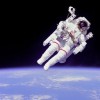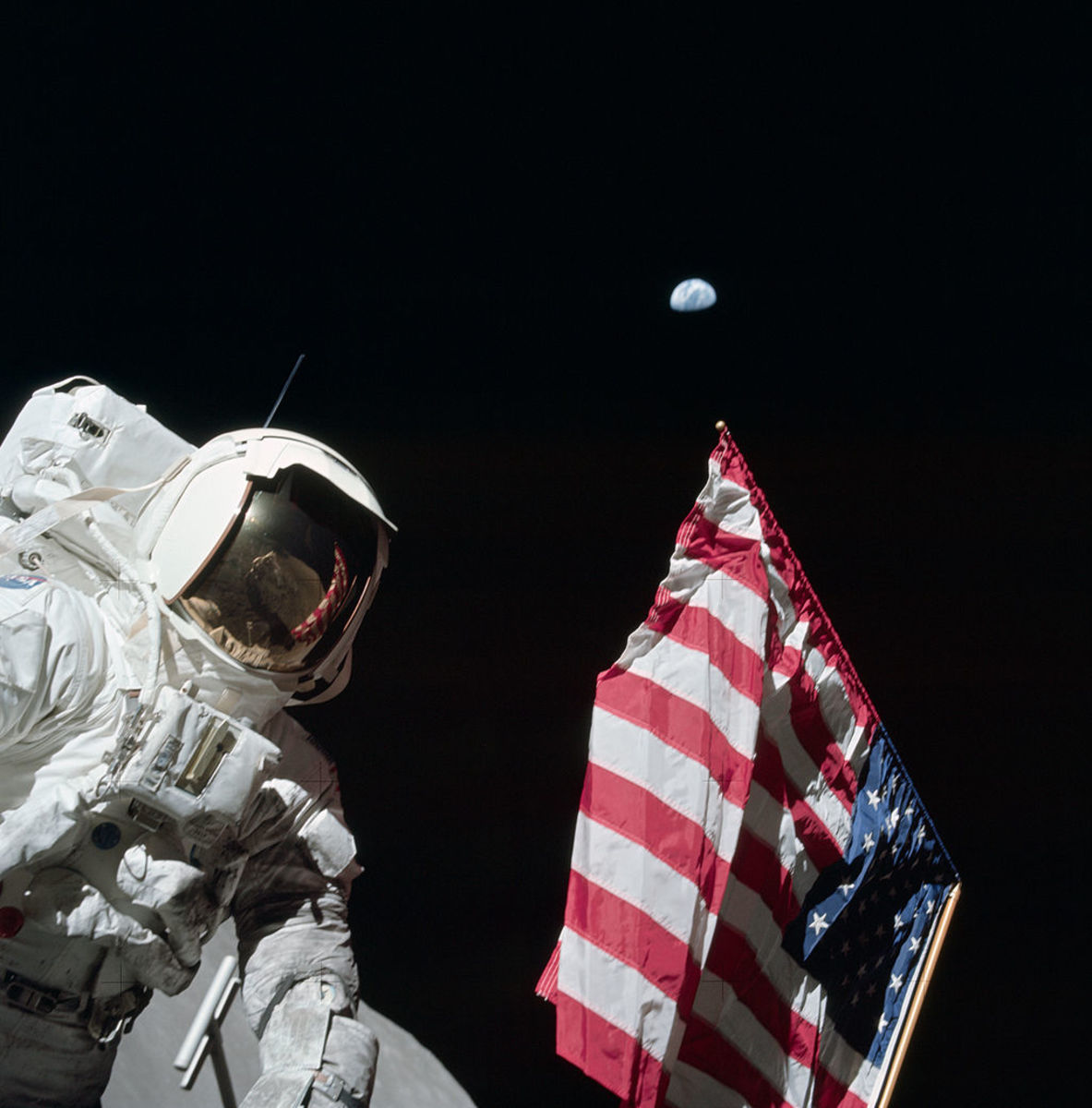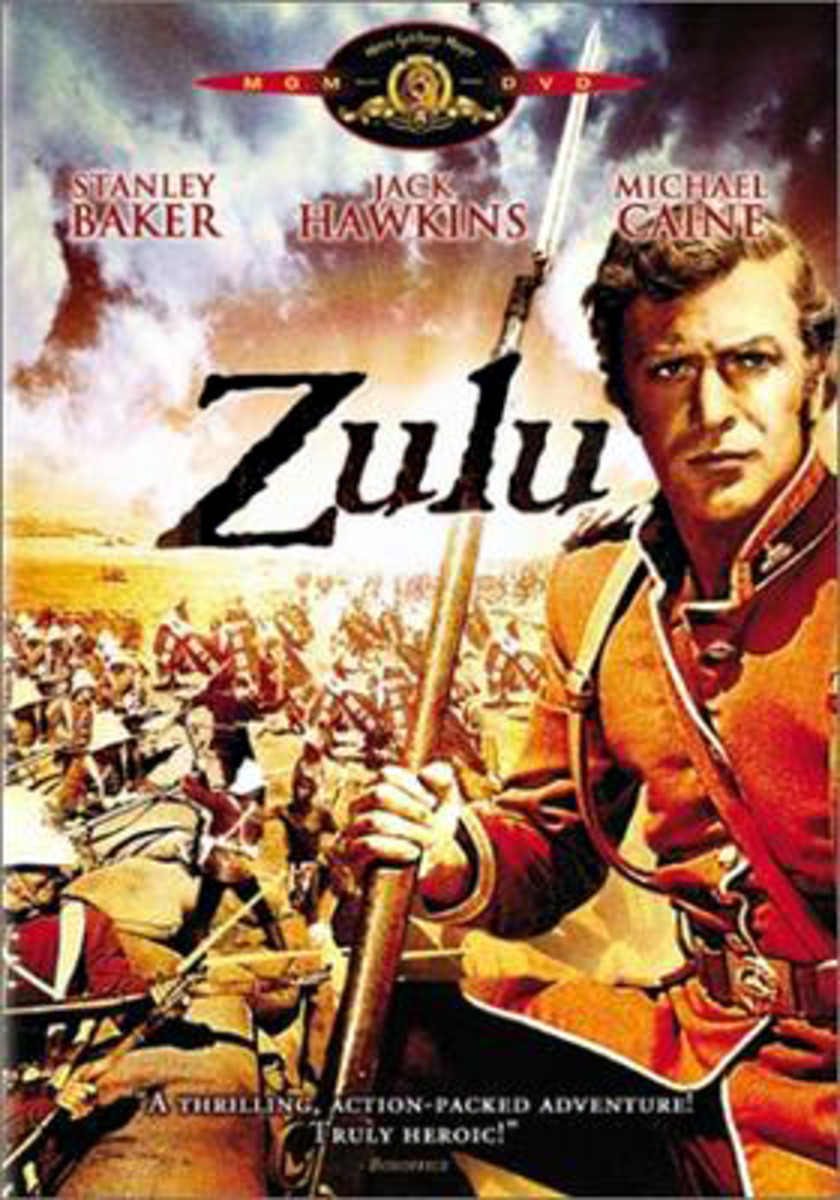How "The Right Stuff" Celebrates Space Exploration
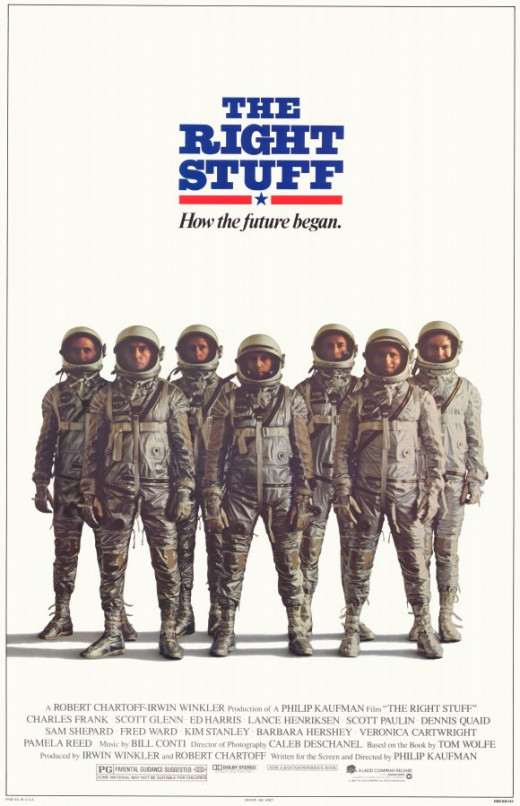
In the recent wake of both the highs and lows in the legacy of NASA and Americans’ accomplishments in space exploitation, it is worth noting a terrific film that successfully captures the spirit and ambition of man’s desire to reach destinations outside of this planet for the purpose of science and exploration. The year 2012 saw the end of the Space Shuttle era for NASA and the death of astronaut Neil Armstrong, the first man on the moon. However, NASA continued its legacy with the successful landing of the Curiosity rover on planet Mars. For science and movie geeks alike, the 1983 film “The Right Stuff” remains an important landmark in cinematic storytelling and a reminder of America’s space pioneers.
“The Right Stuff” is an ambitious undertaking in telling the story of mankind’s drive to accomplish the unthinkable, to challenge the limits of this world, and to put their names in the record books. Beginning in 1947, test pilots and engineers attempt to prove that a man-made aircraft can travel so fast that it can break the sound barrier. Unfortunately, many of these brave pilots lost their lives in their need for speed. Air Force pilot and World War II hero Chuck Yeager (Sam Shepard), knowing full well of the consequences involved in achieving a dangerous feat, volunteers to man the rocket powered Bell X-1 aircraft over the Muroc Army Air Field military base in the California desert.
The opening narration of the film provides insight into the reputation of the sky that aviators dared to challenge: “There was a demon that lived in the air. They said whoever challenged him would die. Their controls would freeze up, their planes would buffet wildly, and they would disintegrate. The demon lived at Mach 1 on the meter, seven hundred and fifty miles an hour, where the air could no longer move out of the way. He lived behind a barrier through which they said no man could ever pass. They called it the sound barrier.”
On October 14, 1947, despite suffering agonizing pain due to two broken ribs he sustained two days prior from falling off of a horse, Yeager became this first pilot to successfully break the sound barrier. Yeager was so determined to fly the scheduled mission that he only told his wife and his close friend and fellow pilot Jack Ridley about the injury. Ridley provided Yeager with the end of a broomstick to allow Yeager to seal the hatch of the X-1 plane on his own. Yeager’s historic flight proved that man could fly at supersonic speeds and thus defeat the “demon in the sky.”
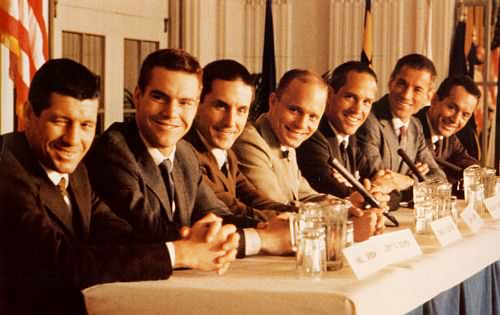
For six years, the test piloting of aircraft remained secret by the military, as to not bring awareness of their flying capabilities to foreign nations. Keep in mind, this entire chronicle is during the height of the Cold War. Political tensions remained high between the United States and the Soviet Union, a theme that plays out with the two nations trying to outperform each other in space exploration, thus paving the way as to what is known as “the space race.” In 1953, Air Force pilots Scott Crossfield (Scott Wilson), Gordon “Gordo” Cooper (Dennis Quaid), and Virgil “Gus” Grissom (Fred Ward) continue to break each other’s speed records while engineers begin building rockets that could break through the earth’s atmosphere. By 1957, the military is forced to make their tests public to the press in order to drum up public support and federal money to keep the program running.
In October 1957, the United States is alarmed that the Soviet Union had successfully launched the Sputnick satellite into orbit, a setback for Americans in the race to claim scientific superiority. The following year, President Eisenhower signed into law the National Aeronautics and Space Act, thus creating NASA. The best of the best test pilots were called to determine who had “the right stuff.” Along with Cooper and Grissom, John Glenn (Ed Harris) of the U.S. Marine Corps, Alan Shepard (Scott Glenn), Wally Schirra (Lance Henrikson), Scott Carpenter (Charles Frank) of the U.S. Navy, and Deke Slayton (Scott Paulin) from the U.S. Air Force underwent grueling physical and mental tests in preparation to see if they can endure the conditions of the flights. They became to be known as the original “Mercury Seven” that represented NASA’s Project Mercury program of solo flights into outer space.
In April of 1961, the United States is defeated once again in the race to put the first human pilot into space as cosmonaut Yuri Gagarin of the Soviet Union completes an orbit of the earth, alarming the presidential administration and military officials. On May 5, 1961, Alan Shepard became the second person and first American to travel into space aboard the MR-3 Freedom 7 in a 15-minute suborbital flight. Shepard became an American hero and received an honorary reception at the White House with President Kennedy. In July of that year, Grissom became the second American in space aboard the M-R 4 Liberty Bell 7 aircraft. As the capsule returns to earth and touches down in the ocean, Grissom begins to panic as the hatch door blows open suddenly and ocean water begins to seep into the capsule. As the rescue helicopter approaches, Grissom is bobbing around in the ocean while the capsule begins to sink and the helicopter fails to raise it up but later rescues Grissom from the ocean. Upon his arrival back to base, Grissom and his family are welcomed to a mediocre reception that paled in comparison to Shepard’s. Since the capsule was lost at sea along with its important data, NASA throws Grissom under the bus by suspecting that he knowingly pulled the hatch prematurely, despite his testimony stating it exploded open on its own. Ward gives a great performance as Grissom struggling to defend his reputation against his superiors and the press as a victim of circumstance from a technical malfunction. While Grissom would continue to fly with NASA, he tragically died in 1967 in the Apollo 1 fire with two fellow astronauts.
In 1962, Scott Glenn became the first astronaut to successfully orbit the earth aboard the Mercury-Atlas 6. During his first orbit, Glenn reported seeing little, bright specks of light outside of his capsule window, claiming they looked like fireflies. It was later determined that they were probably small ice crystals venting from onboard spacecraft systems. On his way back to earth, Glenn undergoes a dramatic re-entry through the atmosphere due to a possible leak in the heat shield and his capsule barely escapes disintegration. Glenn’s successful mission turns the Mercury Seven into national celebrities, as Glenn is the recipient of a ticker tape parade in New York City.
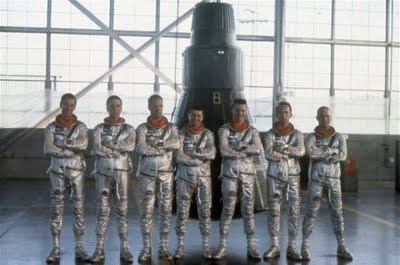
Wolfe’s book and the film adaptation makes a point of honoring the wives of these test pilots, who remained highly supportive of their husbands despite the risk involved. Glennis Yeager (Barbara Hershey), Betty Grissom (Veronica Cartwright), Trudy Cooper (Pamela Reed), Louise Shepard (Kathy Baker), and Annie Glenn (Mary Jo Deschanel) are terrific as the better halves to their death-defying husbands. They continue to encourage their husbands in their ambitions while constantly in a state of worry during each and every mission. The film itself opens with footage and reenactments of failed flight tests and the funerals of numerous pilots, leaving behind widows and father-less children.
Over the course of the film, Yeager remains a supporting player, continuing to fly in the Air Force. However, because he lacked a college degree, he was never considered for the Mercury program. Yeager had much respect for astronauts, stating “it takes a special kind of man to volunteer for a suicide mission, especially when it's on national TV.” In December of 1963, Yeager tested the limits of the Lockheed NF-104A aircraft by setting a new altitude record at the edge of space. As he loses control and the plane spins out of control, he barely escapes death as the plane crashes and he becomes badly burned after jettisoning from the plane. While never considered an astronaut, Yeager, whose supersonic feat 16 years earlier set in motion man’s ambition for speed, proved that he too had “the right stuff.”
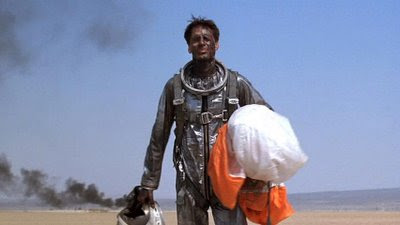
The film concludes with the successful launch of the Mercury-Atlas 9 in May of 1963 piloted by Gordon Cooper. As his capsule is rocketed towards space, the final narration states: “On that glorious day in May 1963, Gordo Cooper went higher, farther, and faster than any other American - 22 complete orbits around the world; he was the last American ever to go into space alone. And for a brief moment, Gordo Cooper became the greatest pilot anyone had ever seen.” While NASA, its engineers and astronauts have since accomplished so much more in space exploration and accomplishments since, “The Right Stuff” remains an enduring narrative of the Mercury program and brave courageous pilots who challenged both earth’s natural element and the Soviet competition in claiming superiority.
Most of the film’s focus is both a history lesson and the bonding & friendly competition amongst the astronauts. They had to prove themselves who would get the chance for fly the death-defying missions while trying to earn the respect as pilots and not be portrayed as “spam in a can.” They clashed with NASA engineers about installing a window and an explosive hatch to the capsule. Free-wheelin’ pilots like Gordon and Grissom clashed with the more conservative Glenn in terms of moral conduct that could possibly be exploited by the press. Politicians and military officials were portrayed more buffoonish whose sole objective was to beat the Soviets. Above all else, the Mercury Seven remain American heroes.
While the film itself is over a staggering three hour run time, its pacing makes it enjoyable throughout. No scene is too slow and each mission (no matter if you actually lived to witness or not) is genuinely exciting. Released in October of 1983, “The Right Stuff” was not a theatrical success, unable to recoup its $27 million budget. However, the film was honored the following year with eight Academy Award nominations, including Best Picture. The film won four, in sound, sound editing, film editing, and an original score Oscar for composer Bill Conti. With an impressive cast of actors who would later have prolific careers, actor Sam Shepard was the only cast member nominated in an acting category.
I definitely recommend this film if you hold an interest in space exploration and NASA. This film is a terrific accompaniment for the film "Apollo 13" and the HBO miniseries "From the Earth to the Moon."
